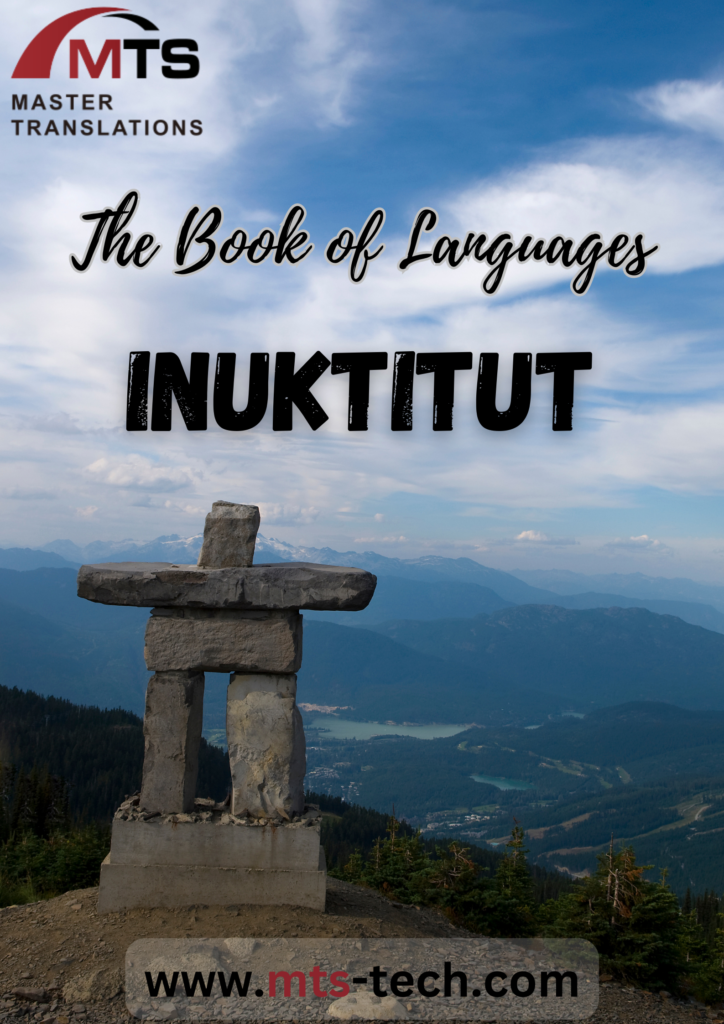
The Inuktitut language is the traditional language of the Inuit, the indigenous peoples of the Arctic regions of Greenland, Canada, and Alaska. It is a vibrant thread woven deeply into the cultural fabric of the Arctic communities. A member of the Eskimo-Aleut language family, Inuktitut is characterized by its rich oral history, a testament to the resilience and adaptability of the Inuit across generations.
The history of Inuktitut is as old as the Inuit culture itself, tracing back thousands of years. Its evolution has been marked by the geographical isolation of its speakers, which has led to a variety of dialects. The timeline of Inuktitut spans from prehistoric times, through the European contact period in the 18th century, which introduced syllabics—still used in writing today—and into the modern era where it faces new challenges and opportunities.

Words!
Inuktitut is known for having words that are particularly descriptive and deeply tied to the environment of the Arctic. Take “qanik,” which refers to falling snow, “aput,” which means snow on the ground, and “pukak,” for crystalline snow on the ground that looks like salt. These words reflect the integral role that snow plays in the Inuit way of life and showcase the language’s capacity to articulate subtle distinctions in the natural world.

There are also fascinating facts about Inuktitut that highlight its uniqueness. Firstly, it employs a writing system known as syllabics, which is distinctive to the languages of indigenous peoples in Canada. Secondly, Inuktitut has a polysynthetic structure, where words are formed by combining a series of morphemes, resulting in very long words that can convey complex ideas. Lastly, despite the modern influences, Inuktitut remains a living language, with thousands of speakers using it as their mother tongue.
The art of Inuktitut storytelling is steeped in a tradition that predates written history. It is an art form that has been crucial in preserving the folklore, wisdom, and knowledge of the Inuit. Storytelling in Inuktitut is not just about entertainment, it is also a communal experience that reinforces social bonds and cultural identity.

However, learning Inuktitut poses certain challenges for non-native speakers. Its complex syntax and morphology can be daunting, and the lack of resources available in the language makes it difficult to practice and maintain proficiency. Moreover, the language’s reliance on contextual and environmental nuances can be a hurdle for those not familiar with the Arctic lifestyle and traditions.
So, if you are just starting a journey to learn this language to learn the culture or academically, we envy you and wish you a good luck with the challenges to come!
